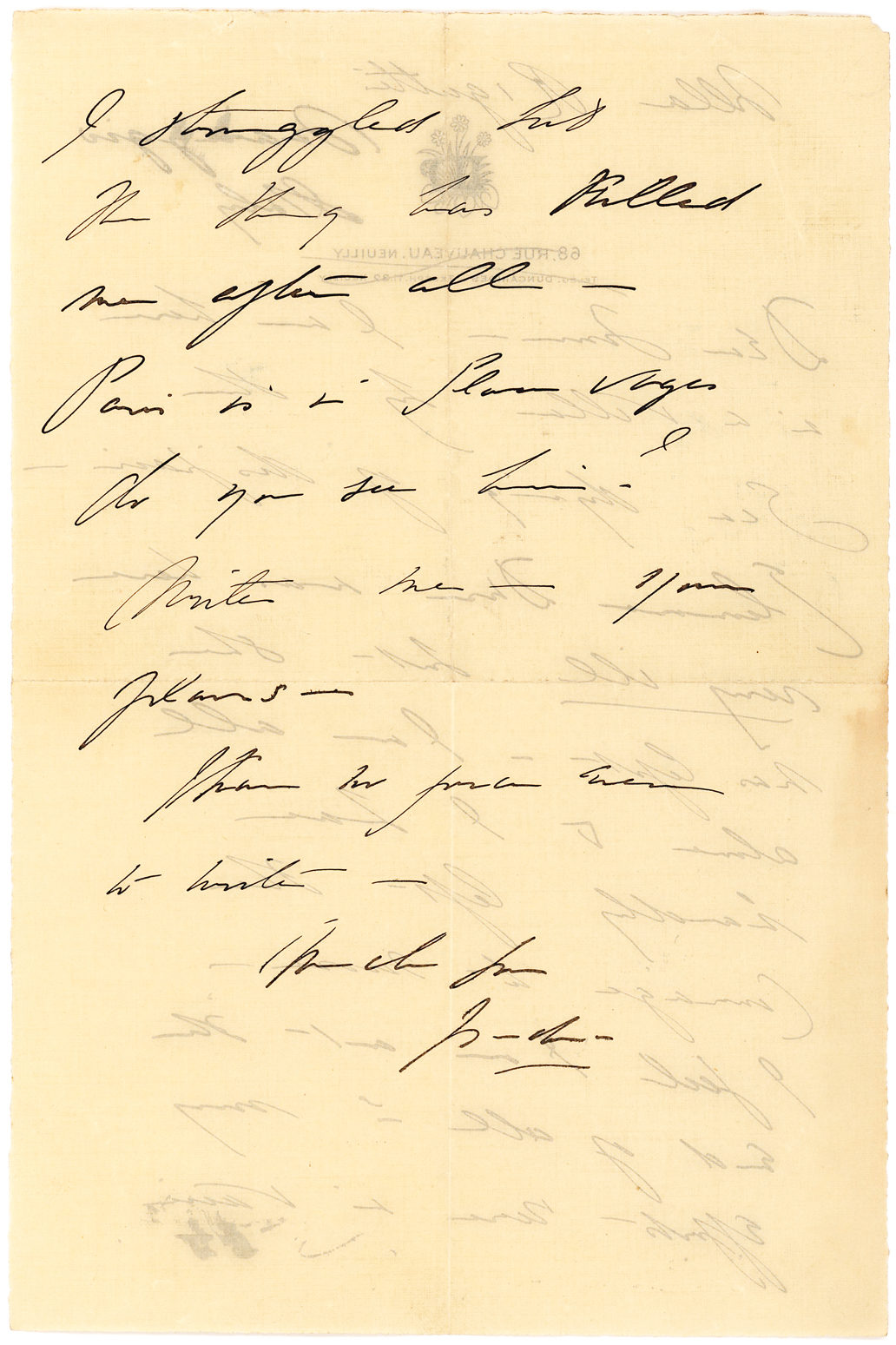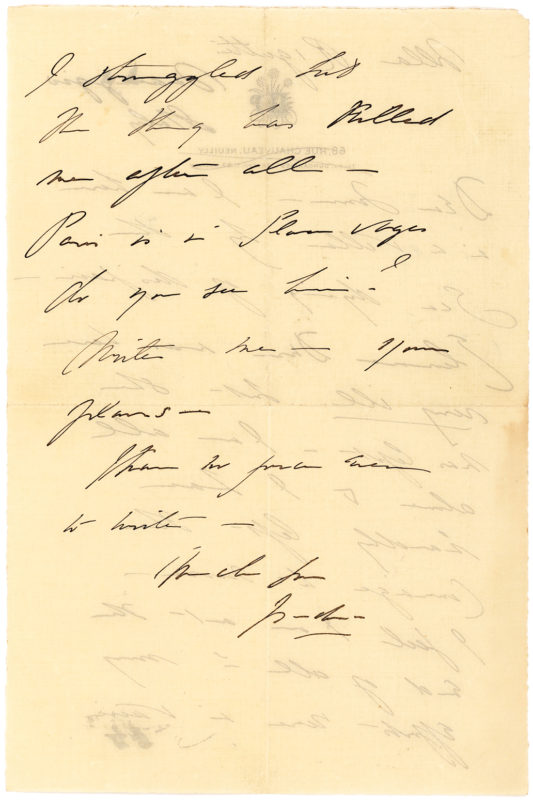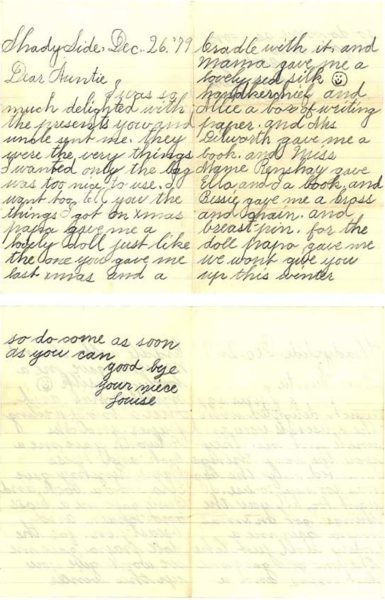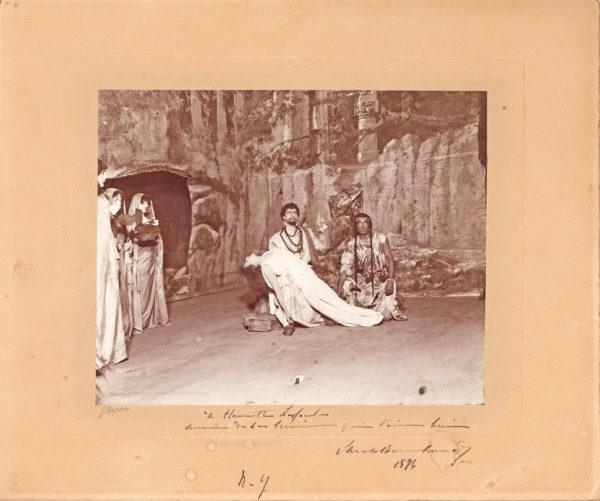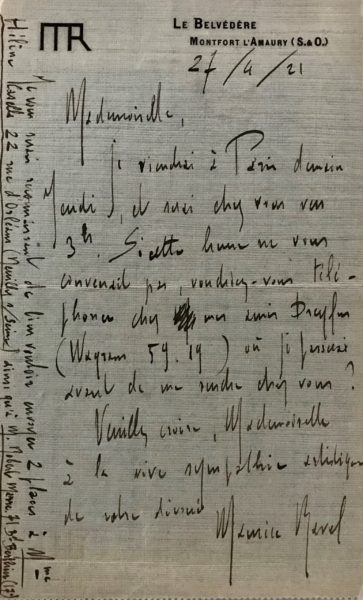DUNCAN, ISADORA. (1878-1927). American dancer who introduced the art of interpretive dance. ALS. (“Isadora”). 2pp. 4to. Viareggio, (Circa November/December, 1913). On her monogrammed Neuilly stationery the address of which she has crossed out and replaced with, “Villa Rigatti, Viareggio, Italy.”
“I am here in a villa by the sea dying of despair – Eleonora Duse was here very ill but she has left – I am all alone & I have hardly left the courage to move. I feel I am at the end of all & my efforts were in vain. I struggled but the thing has killed me after all – Paris is in place [des] Vosges. Do you see him? Write me your plans. I have no force even to write – …”
A visionary of modern dance, Duncan left the United States at 21 to pursue a career in Europe where her popular performances in Berlin, Budapest, Munich, Vienna, and other European cities, led to friendships with many notable contemporaries. Duncan’s success enabled her to open dance schools in France, Germany, Russia, and the United States.


